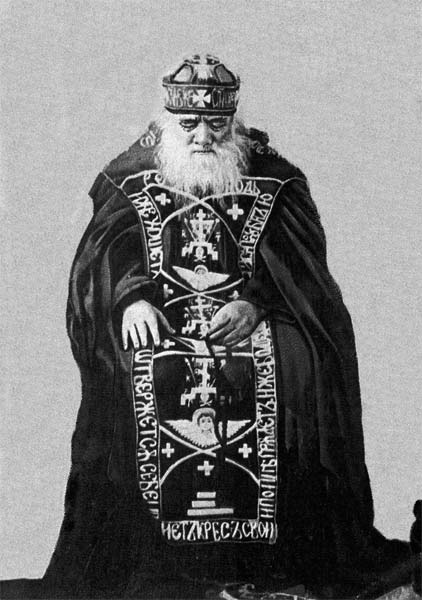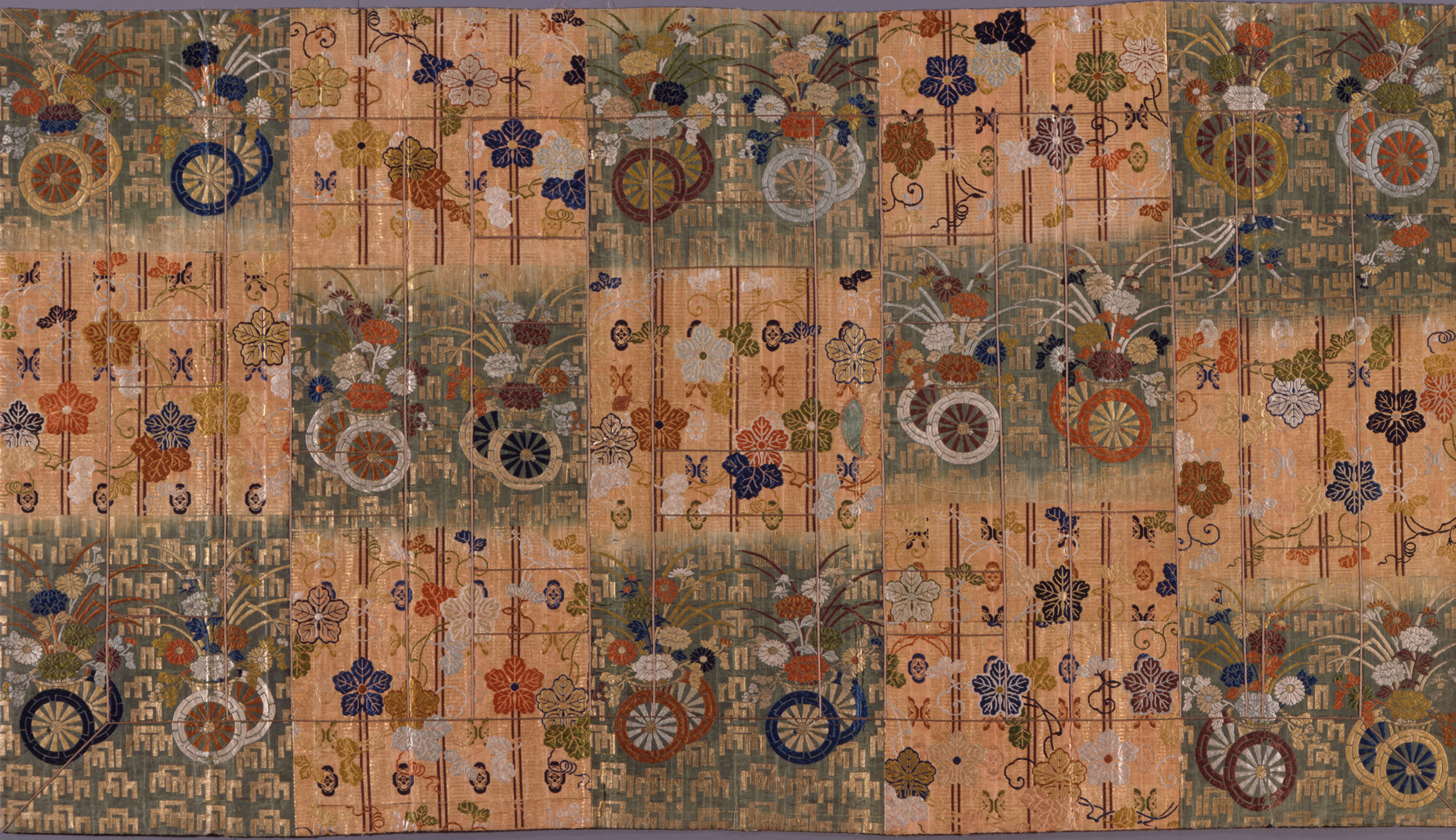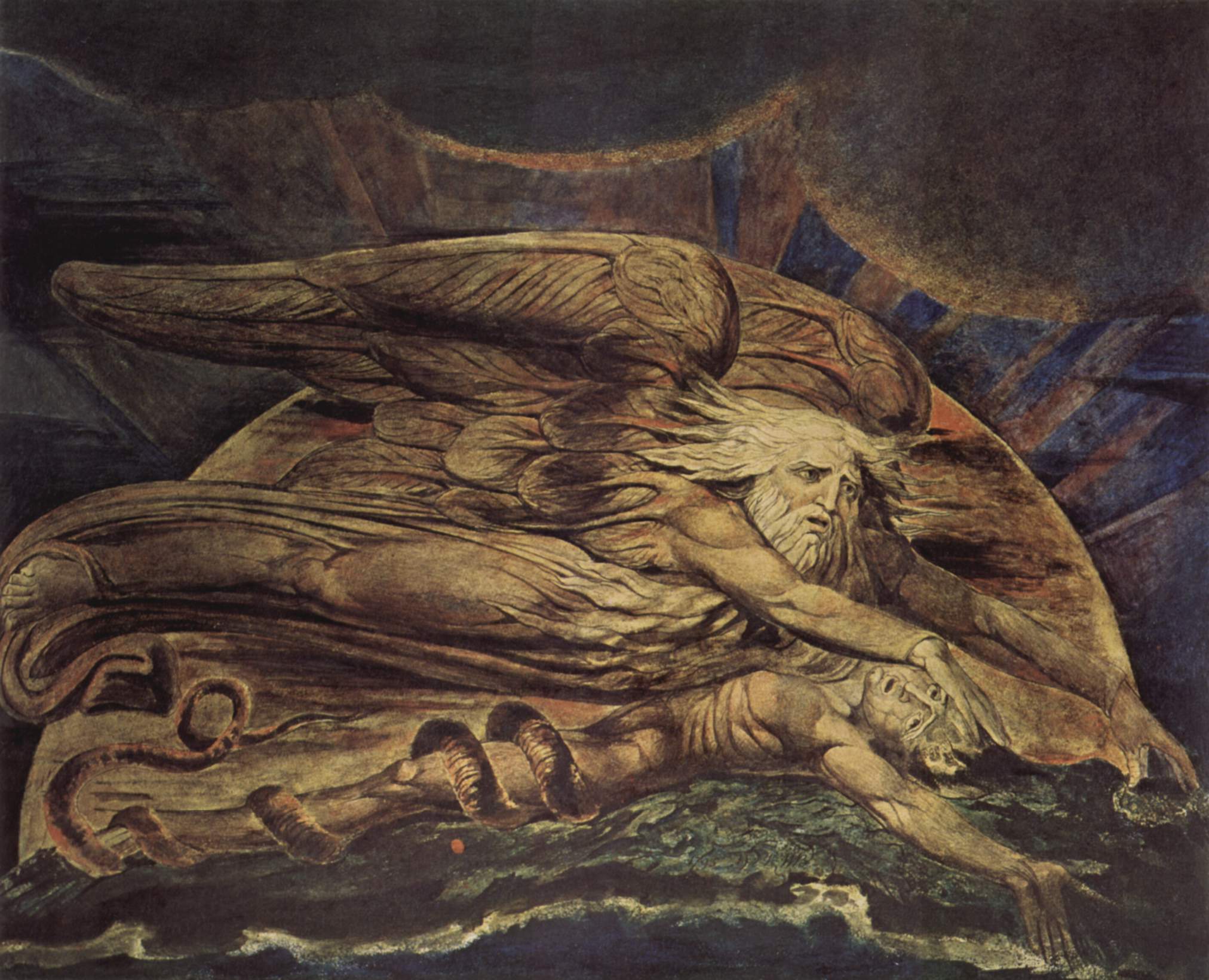|
Analavos
The Analavos of the Great Schema () is a distinctive vestment worn only by the highest degree of monastics in Eastern Orthodox Christianity, emblematic of their monastic habit. It is a symbol of their total devotion to the cross and to the Orthodox Faith, and is adorned with the Instruments of the Passion and other religious symbols. Description The word ''analavos'' (''Analav'' in Church Slavonic) comes from the Greek ''αναλαμβάνω'', meaning "to take up." This phrase comes from Luke 9:23, "Then he said to them all: 'Whoever wants to be my disciple must deny themselves and take up their cross daily and follow me.'" A garment called simply the Many Crosses () serves to hold the analavos in place and can reach from the ankles to the neck. The garment itself takes the form of a cross when worn, spreading over the wearer's shoulders and front and back torso. The crosses on the analavos represent a Christian monk's constant crucifixion with Christ, a scriptural theme p ... [...More Info...] [...Related Items...] OR: [Wikipedia] [Google] [Baidu] |
Degrees Of Eastern Orthodox Monasticism
The degrees of Eastern Orthodox monasticism are the stages an Eastern Orthodox monk or nun passes through in their religious vocation. In the Eastern Orthodox Church, the process of becoming a monk or nun is intentionally slow, as the monastic vows taken are considered to entail a lifelong commitment to God, and are not to be entered into lightly. After a person completes the novitiate, three degrees or steps must be completed in the process of preparation before one may gain the monastic habit. Some Byzantine Rite Catholic Churches use these same monastic degrees and titles and some of these form the Order of Saint Basil the Great in Eastern Europe and abroad. Orthodox monasticism Unlike in Western Christianity, where different religious orders and societies arose, each with its own profession rites, the Eastern Orthodox Church has only one type of monasticism. The profession of monastics is known as tonsure (referring to the ritual cutting of the monastic's hair which ... [...More Info...] [...Related Items...] OR: [Wikipedia] [Google] [Baidu] |
Christian Monasticism
Christian monasticism is a religious way of life of Christians who live Asceticism#Christianity, ascetic and typically cloistered lives that are dedicated to Christian worship. It began to develop early in the history of the Christian Church, modeled upon scriptural examples and ideals, including those in the Old Testament. It has come to be regulated by religious rules (e. g., the Rule of Saint Augustine, Anthony the Great, Pachomius the Great, St Pachomius, the Rule of St Basil, the Rule of St Benedict) and, in modern times, the Canon law of the respective Christian denominations that have forms of monastic living. Those living the monastic life are known by the generic terms monks (men) and nuns (women). The word ''monk'' originated from the Ancient Greek language, Greek (, 'monk'), itself from () meaning 'alone'. Christian monks did not live in monasteries at first; rather, they began by living alone as solitaries, as the word might suggest. As more people took on the li ... [...More Info...] [...Related Items...] OR: [Wikipedia] [Google] [Baidu] |
Monastic Habit
A religious habit is a distinctive set of clothing worn by members of a religious order. Traditionally, some plain garb recognizable as a religious habit has also been worn by those leading the religious eremitic and anchoritic life, although in their case without conformity to a particular uniform style. Uniformity and distinctiveness by order often evolved and changed over time. Interpretation of terms for clothes in religious rules could change over centuries. Furthermore, every time new communities gained importance in a cultural area the need for visual separation increased for new as well as old communities. Thus, modern habits are rooted in historic forms, but do not necessarily resemble them in cut, color, material, detail or use. In Christian monastic orders of the Catholic, Lutheran and Anglican Churches, the habit often consists of a tunic covered by a scapular and cowl, with a hood for monks or friars and a veil for nuns; in apostolic orders it may be a distinctiv ... [...More Info...] [...Related Items...] OR: [Wikipedia] [Google] [Baidu] |
Saint Jonah Of Kyiv
In Christian belief, a saint is a person who is recognized as having an exceptional degree of holiness, likeness, or closeness to God. However, the use of the term ''saint'' depends on the context and denomination. In Anglican, Oriental Orthodox, and Lutheran doctrine, all of their faithful deceased in Heaven are considered to be saints, but a selected few are considered worthy of greater honor or emulation. Official ecclesiastical recognition, and veneration, is conferred on some denominational saints through the process of canonization in the Catholic Church or glorification in the Eastern Orthodox Church after their approval. In many Protestant denominations, and following from Pauline usage, ''saint'' refers broadly to any holy Christian, without special recognition or selection. While the English word ''saint'' (deriving from the Latin ) originated in Christianity, historians of religion tend to use the appellation "in a more general way to refer to the state of special h ... [...More Info...] [...Related Items...] OR: [Wikipedia] [Google] [Baidu] |
Grace In Christianity
In Western Christian beliefs, grace is God's favor, and a "share in the divine life of God". It is a spontaneous gift from God – "generous, free and totally unexpected and undeserved" – that cannot be earned. In the Eastern Orthodox Church, grace is the uncreated energies of God. Among Eastern Christians generally, grace is considered to be the partaking of the divine nature described in Fr. Tadros Malaty, ''The Divine Grace'PDF and grace is the working of God himself, not a created substance of any kind that can be treated like a commodity.Gregory (Grabbe), Archbishop. ''The Sacramental Life: An Orthodox Christian Perspective.'' Liberty TN: St. John of Kronstadt Press, 1986 As an attribute of God, grace manifests most in the salvation of sinners, and Western Christianity holds that the initiative in the relationship of grace between God and an individual is always on the side of God. The question of the means of grace has been called "the watershed that divides C ... [...More Info...] [...Related Items...] OR: [Wikipedia] [Google] [Baidu] |
Trisagion Prayers
The ''Trisagion'' (; 'Thrice Holy'), sometimes called by its incipit ''Agios O Theos'', is a standard hymn of the Divine Liturgy in most of the Eastern Orthodox, Western Orthodox, Oriental Orthodox, and Eastern Catholic churches. In churches which use the Byzantine Rite, the Trisagion is chanted immediately before the ''Prokeimenon'' and the Epistle reading. It is also included in a set of prayers named for it, called the Trisagion Prayers, which forms part of numerous services (the Hours, Vespers, Matins, and as part of the opening prayers for most services). It is most prominent in the Latin Church for its use on Good Friday. It is also used in the Liturgy of the Hours and in some Catholic devotions. Form of the prayer The Trisagion prayer is an ancient prayer in Christianity. In Greek: In Latin: In English – literal translation: In English – common liturgical translation: In Syriac: History Traditional origins The Greek phrase ''Trisagion'' transla ... [...More Info...] [...Related Items...] OR: [Wikipedia] [Google] [Baidu] |
Golgatha
Calvary ( or ) or Golgotha () was a site immediately outside Jerusalem's walls where, according to Christianity's four canonical gospels, Jesus was crucified. Since at least the early medieval period, it has been a destination for pilgrimage. The exact location of Calvary has been traditionally associated with a place now enclosed within one of the southern chapels of the multidenominational Church of the Holy Sepulchre, a site said to have been recognized by the Roman empress Helena, mother of Constantine the Great, during her visit to the Holy Land in 325. Other locations have been suggested: in the 19th century, Protestant scholars proposed a different location near the Garden Tomb on Green Hill (now "Skull Hill") about north of the traditional site and historian Joan Taylor has more recently proposed a location about to its south-southeast. Biblical references and names The English names Calvary and Golgotha derive from the Vulgate Latin , and (all meaning "place ... [...More Info...] [...Related Items...] OR: [Wikipedia] [Google] [Baidu] |
Adam
Adam is the name given in Genesis 1–5 to the first human. Adam is the first human-being aware of God, and features as such in various belief systems (including Judaism, Christianity, Gnosticism and Islam). According to Christianity, Adam sinned in the Garden of Eden by eating from the tree of the knowledge of good and evil. This action introduced death and sin into the world. This sinful nature infected all his descendants, and led humanity to be expelled from the Garden. Only through the crucifixion of Jesus, humanity can be redeemed. In Islam, Adam is considered '' Khalifa'' (خليفة) (successor) on earth. This is understood to mean either that he is God's deputy, the initiation of a new cycle of sentient life on earth, or both. Similar to the Biblical account, the Quran has Adam placed in a garden where he sins by taking from the Tree of Immortality, so loses his abode in the garden. When Adam repents from his sin, he is forgiven by God. This is seen as a guidan ... [...More Info...] [...Related Items...] OR: [Wikipedia] [Google] [Baidu] |
Jerusalem
Jerusalem is a city in the Southern Levant, on a plateau in the Judaean Mountains between the Mediterranean Sea, Mediterranean and the Dead Sea. It is one of the List of oldest continuously inhabited cities, oldest cities in the world, and is considered Holy city, holy to the three major Abrahamic religions—Judaism, Christianity, and Islam. Both Israel and Palestine claim Jerusalem as their capital city; Israel maintains its primary governmental institutions there, while Palestine ultimately foresees it as its seat of power. Neither claim is widely Status of Jerusalem, recognized internationally. Throughout History of Jerusalem, its long history, Jerusalem has been destroyed at least twice, Siege of Jerusalem (other), besieged 23 times, captured and recaptured 44 times, and attacked 52 times. According to Eric H. Cline's tally in Jerusalem Besieged. The part of Jerusalem called the City of David (historic), City of David shows first signs of settlement in the 4th ... [...More Info...] [...Related Items...] OR: [Wikipedia] [Google] [Baidu] |
Paradise
In religion and folklore, paradise is a place of everlasting happiness, delight, and bliss. Paradisiacal notions are often laden with pastoral imagery, and may be cosmogonical, eschatological, or both, often contrasted with the miseries of human civilization: in paradise there is only peace, prosperity, and happiness. Paradise is a place of contentment, a land of luxury and fulfillment containing ever-lasting bliss and delight. Paradise is often described as a "higher place", the holiest place, in contrast to World (theology), this world, or underworlds such as hell. In eschatological contexts, paradise is imagined as an Entering heaven alive, abode of the virtuous dead. In Islam, Judaism, and Christianity, heaven is a paradisiacal belief. In Hinduism and Buddhism, paradise and svarga, heaven are synonymous, with higher levels available to beings who have achieved special attainments of virtue and meditation. In old Egyptian beliefs, the underworld is Aaru, the reed-fields of ide ... [...More Info...] [...Related Items...] OR: [Wikipedia] [Google] [Baidu] |
Helena, Mother Of Constantine I
Flavia Julia Helena (; , ''Helénē''; – 330), also known as Helena of Constantinople and in Christianity as Saint Helena, was an ''List of Augustae, Augusta'' of the Roman Empire and mother of Emperor Constantine the Great. She was born in the lower classes''Anonymus Valesianus'1.2 "Origo Constantini Imperatoris". traditionally in the city of Drepanon, Bithynia, in Asia Minor, which was renamed Helenopolis (Bithynia), Helenopolis. Helena ranks as an important figure in the history of Christianity. In her final years, she made a religious tour of Syria Palaestina and Jerusalem, during which ancient tradition claims that she discovered the True Cross. The Eastern Orthodox Church, Catholic Church, Oriental Orthodox Churches, Anglican Communion, and the Lutheranism, Lutheran Church revere her as a saint. Early life Though Helena's birthplace is not known with certainty, Helenopolis (Bithynia), Helenopolis, then Drepanon, in Bithynia, following Procopius, is the one su ... [...More Info...] [...Related Items...] OR: [Wikipedia] [Google] [Baidu] |
Tree Of The Knowledge Of Good And Evil
In Christianity and Judaism, the tree of the knowledge of good and evil (, ; ) is one of two specific trees in the story of the Garden of Eden in Genesis 2–3, along with the tree of life. Alternatively, some scholars have argued that the tree of the knowledge of good and evil is just another name for the tree of life. In Genesis Narrative Genesis 2 narrates that God places the man, Adam, in a garden with trees whose fruits he may eat, but forbids him to eat from "the tree of the knowledge of good and evil". God forms a woman, Eve, after this command is given. In Genesis 3, a serpent persuades Eve to eat from its forbidden fruit and she also lets Adam taste it. Consequently, God expels them from the garden. Unlike the tree of life, the tree of the knowledge of good and evil does not appear anywhere else in the Hebrew Bible or in other ancient Semitic cultures. However, the phrase "knowledge of good and evil" does appear elsewhere in the Bible (e.g., and ). Meaning of ... [...More Info...] [...Related Items...] OR: [Wikipedia] [Google] [Baidu] |









